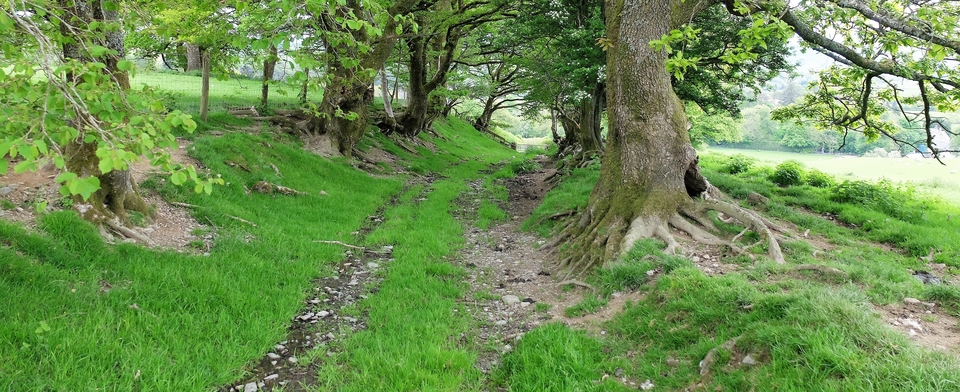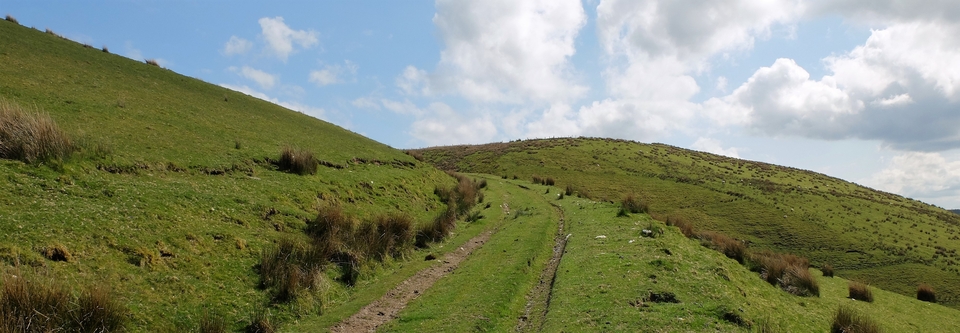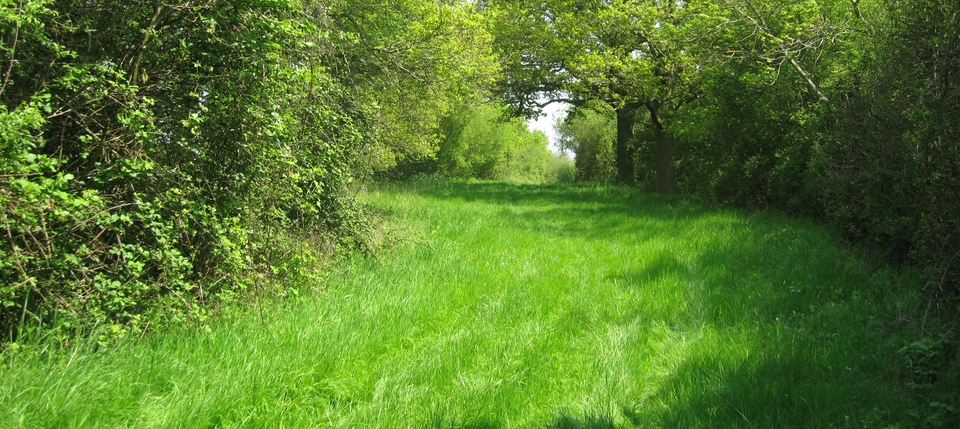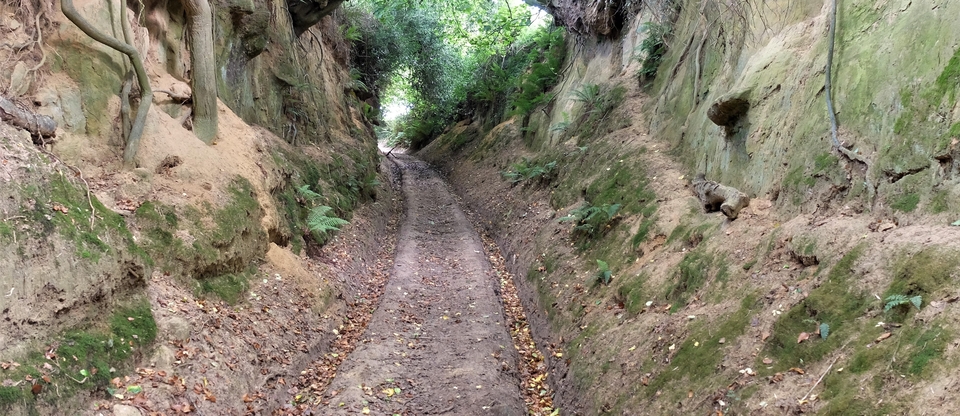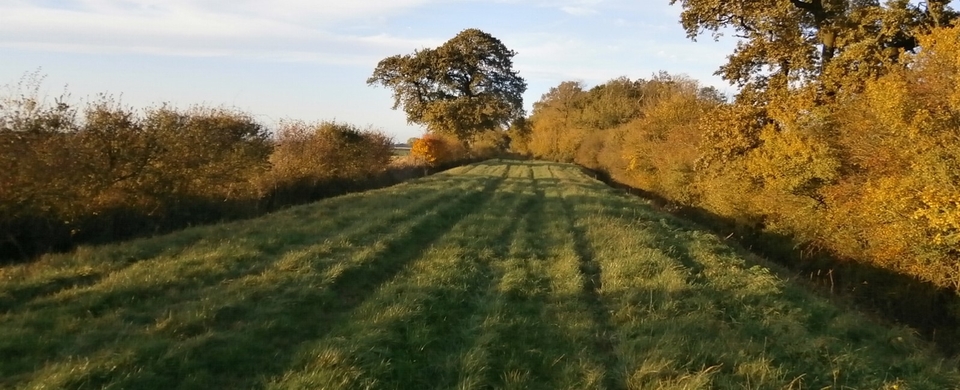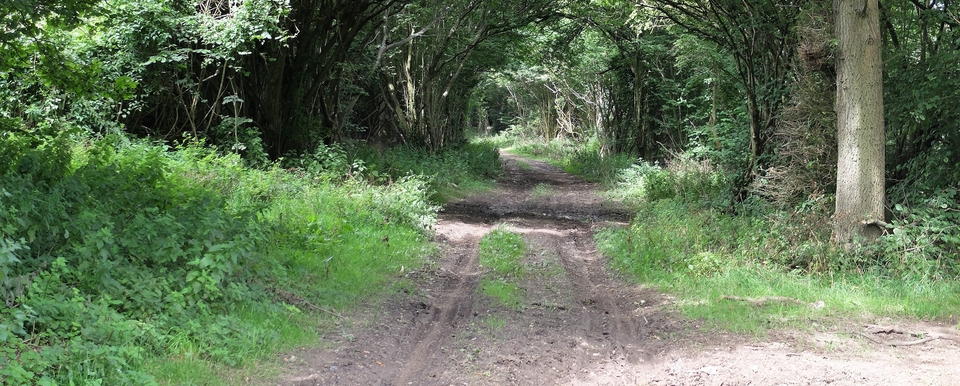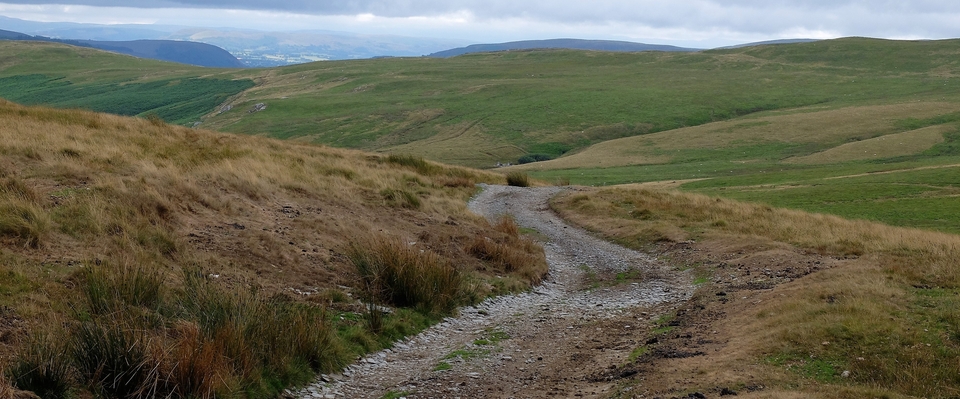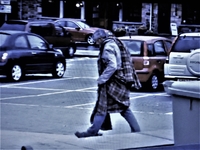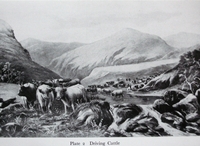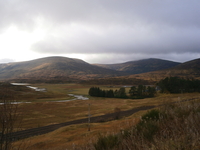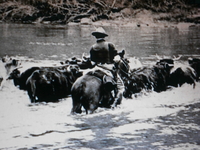The Plaid, The Drove, The Inns
The Plaid1 was a thick woollen blanket, 3 yards long by 2 yards wide, worn by clansmen and drovers. One typically thinks of a tartan plaid, but the point of the pattern was camouflage, not livery: a chequered cloth affords the best disguise. This was important because the commonest activity seems to have been ‘lifting' cattle from a neighbouring clan.
Wearing the plaid made the Highlander ready for a sortie at any time. Edmund Burt2 writes of the Highlanders “carrying their tents with them”.
One way of putting it on was to soak it in a stream; hold it over the camp fire till warm and dry; hold one end up in the air and twist your body till you were enveloped.
A pair of drovers might decide, on a freezing night, to soak one of their plaids in a burn and drape it over two low branches. They would then crawl inside the ‘tent' and go to sleep sharing the other plaid for extra warmth. In a few hours the wet one would be covered in ice, which insulated the men from the elements.
* * *
Once on the drove, the routine had to be leisurely, for the cattle would have grown soft from summer grazing. So it was usual to start no earlier than eight o'clock and stop for at least an hour at midday for water and grass.
The men only had a dram at noon: their main meals were breakfast and supper, when the fire was lit. But these meals were almost exclusively oats, the only crop that could mature in the short, wet Highland summer. (However, blood was often drawn from the healthiest beasts to make black pudding.)
The grass found on the drove was often a lot better than the grass they'd left behind: one Aberdeenshire farmer told his shepherd to wander the drove roads for a month: they returned fat enough for market.
* * *
The inns had a rotten reputation: here is Dorothy Wordsworth on the subject:
“A wretched place, as dirty as a house for sale on a rainy day...”
“...seven or eight travellers with dogs sitting in a circle around a peat fire on the floor.”
[Re King's House in Glencoe] “The most miserable place in the Highlands.”
* * *
Postscript: after the Highland Clearances many emigrated to the USA to become the cowboys of the *Wild West". (#4)
1 Rhyming with bad
2 Letters from the North of Scotland, 1754
The prefix Dal- (see #3) usually indicates an old inn: it means field or stance.
